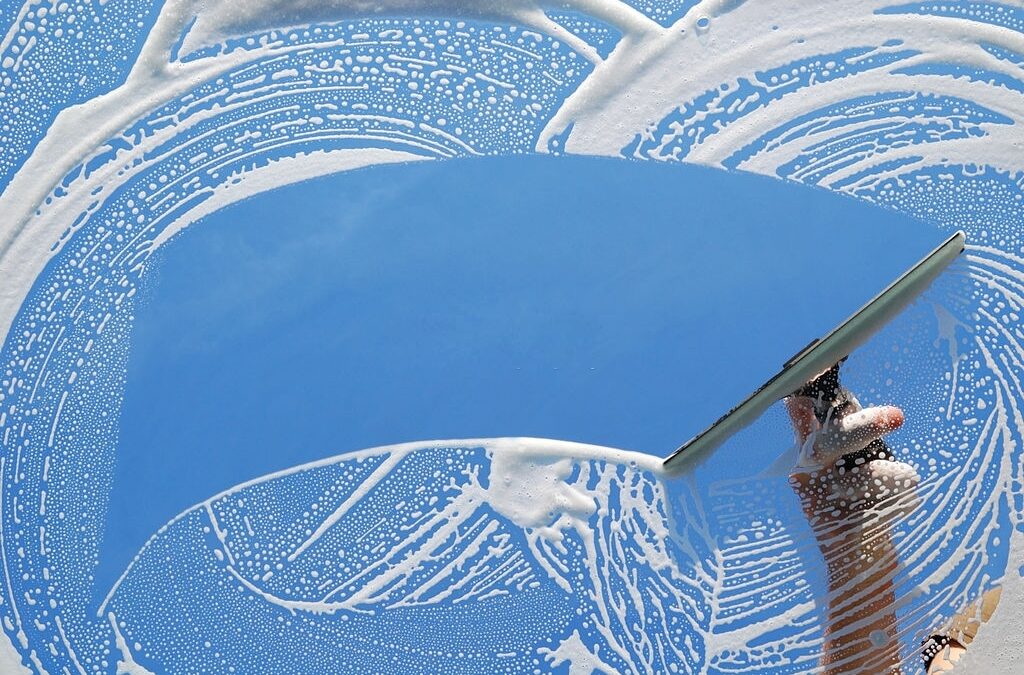The profession of window washing requires constant maintenance and careful planning. The window cleaners are responsible for the cleanliness of buildings, windows and glass facades. A large number of office buildings also require regular cleaning. Companies that rent high-rise office space expect to have a clear view of the city from their offices. They work on a scaffold hundreds of feet above the street. To achieve this, window washers have to clean from outside the building. Using the right tools, window cleaning can be done efficiently and safely.
The most common tools used to clean windows are water-fed poles and a squeegee. For multi-pane windows, a hog-bristle squeegee is ideal. Natural sponges are firmer than synthetic ones and can be used in corners to get rid of stubborn dirt. When cleaning windows, make sure to wipe down the squeegee blade with a lint-free cloth to remove any dirt. The squeegee’s blade should be cleaned between strokes so that it doesn’t leave any streaks. To dry off the squeegee, wipe it with a rag.
The best way to clean windows is to use a squeegee with a rubber edge. This tool will clean the squeegee edge, which can be cleaned with a lint-free cloth. Then, you can pull the squeegee across the entire window to remove dirt and grit. Finally, you can wipe away the water residue with a chamois or a damp cloth.
For windows with multiple panes, a hog-bristle brush or handheld sponge should be used. Both tools have different features, but both are effective. A hog-bristle brush will work best on multi-pane windows. A squeegee with a hog-bristle edge works better in corners to remove water spots. When using a squeegee, make sure to clean the blade after each stroke to avoid streaks on the glass. To remove a streak on glass, use a chamois or muntin to dry the window.
The best time for window cleaning is when temperatures are right for outdoor cleaning. During summer, you must avoid using the water too hot or you might risk a fire. You should also be aware that a water-fed pole is much easier to handle than a traditional pole. The shortest pole is about 70 feet long, and can reach up to six storeys. A pole with a water-fed tip can also be used for window washing in the winter.
If the window is multi-pane, a hog-bristle brush or sponge will work best. In addition to a hog-bristle squeegee, it should be used with a deionized water. This is because the water containing ions is too acidic and can damage the glass. Moreover, the water is diluted with other solvents. Thus, a water-fed squeegee is not suitable for the windows of buildings.
The squeegee is the most suitable tool for window washing. A hog-bristle squeegee has a rubber edge and should be wiped with a lint-free cloth. A chamois or a pencil squeegee should be used to clean the rubber edge of the window. A squeegee is not recommended for cleaning multi-pane windows.
When cleaning multi-pane windows, a squeegee with a hog-bristle brush is a good choice. The squeegee should be wet with water before applying the powder. After cleaning, the squeegee should be cleaned with non-ammonia all-purpose cleaner. It should be thoroughly rinsed with clean water and wiped dry with a lint-free cloth.
A squeegee with a rubber edge is a great tool for multi-pane windows. The squeegee should be soaked in water after cleaning. The squeegee should then be pulled across the window to remove dirt and grime. Once the squeegee has been rinsed, it should be dried with a damp cloth. If the stain is on the glass, the chamois or a muntin should be dried with a rag.
To prevent injuries and accidental burns from the cleaning solution, you should wear warm and comfortable boots. The squeegee should also be waterproof to prevent it from getting wet while cleaning the windows. Ensure that the window cleaning solution does not get into your eyes and do not spray hot water on the glass. Lastly, it is always advisable to hire a professional window washer for the safety of your property. The cleaning service will take care of the work, but it may be safer to hire a professional.

